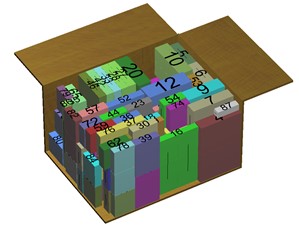This past June, the largest overnight delivery carriers (FedEx and UPS) announced that they would apply dimensional weight pricing to all shipments, effective January 2015. It is expected that shipping costs will increase 20 to 30 percent and affect over 70 percent of all shipments.
What shippers are truly affected by the new pricing model?
What can be done to avoid the cost increase? Read on.
What is Dimensional Weight Pricing?
Dimensional weight pricing is an industry tice that sets the shipping price based on package volume which equates to the amount of space a package occupies in relation to its actual weight. This pricing method takes into account the exterior package size, which is the amount of space a package occupies when in the cargo area of the transport vehicle, in relation to its actual weight to determine the appropriate price. The dimensional weight calculation will apply if it is greater than the actual weight.
Why the Switch?
The largest delivery companies have claimed that this method is required due to industry trends, packaging efficiencies, and sustainability opportunities. Let’s take a look at the industry trends. The number one reason for the change is consumer behavior. End consumers are now making more purchases via alternative buying channels.
The e-Commerce Impact
A UPS e-commerce study revealed that more than half of online shoppers have abandoned an online shopping cart due to the estimated delivery date and 61 percent cited shipping costs as the top reason for cart abandonment. E-commerce providers are trying to address this dilemma by turning to more economical packaging. Three trends are contributing to increased demand for parcel delivery:
- Popularity of online shopping is increasingly replacing traditional brick-and-mortar
- Manufacturers are developing their own e-commerce strategies
- Increasing gas prices
There are two challenges that e-commerce companies have to continuously address. The first is that a large percentage of orders received require the warehouse pickers to determine which box size to use. The picker has to decide the optimal box size, manually. They may have to choose from 200 to 300 pre-fabricated boxes, consuming a great deal of time. Second, and just as important, the cost associated with shipping air in a carton, now that cube affects the delivery price, is enormous. Material handling systems are optimized to handle medium and large box sizes efficiently. There will be a decrease in package dimensions to accommodate the switch to dimensional weight pricing and an increase in smaller box sizes with more products placed in a given box.
The Impact on Consumer Goods and Life Sciences Manufacturers
Consumer goods companies that manufacture items such as cosmetics, fragrance, and body care products are high volume users of parcel delivery carriers. Getting more goods into the same box will save a significant amount of parcel freight cost. Life science manufacturers, such as medical device and secondary pharmaceutical providers, will also see a substantial rise in parcel delivery costs. Today, these manufacturers ship thousands of parcels on a daily basis in many different size boxes. One such shipper uses FedEx and UPS and has 200 plus prefabricated boxes. The complexity becomes overwhelming for the pickers given the choices and the various sizes of the products placed in the boxes.
How to Avoid Cost Increases & Improve Labor Efficiencies
Identifying the optimal box size reduces the number of parcel deliveries, increases picker thru-put and minimizes the use of larger boxes. The use of cartonization optimization technology to evaluate the contents of an order, to determine the number and size of each shipping carton required for the order, minimizes cost and increases efficiency. Shippers are asking themselves:
- How do I estimate the actual delivery cost for my customer?
- What is the exact dimensional weight price?
- What box do I use?
- Should we use prefabricated, on demand corrugate, or carrier provided boxes?
- How many pieces can I fit in this box?
Answering these questions is the game changer for warehouse and transportation operations. Companies like L’Oreal in Europe are using parcel box optimization technology to ensure as many items are placed in a box as possible and that the optimal box size is selected. Advanced and executional cartonizing results in quantifiable reduction in parcel delivery cost, increased labor efficiencies and precise dimensional pricing.
Right Product. Right Box. Right Price.
Obtaining the ability to identify the right products for the right box at the right price provides an intelligent way to avoid the dimensional weight price increase start January 1, 2015. Using box optimization technology has demonstrated up to 15 percent improvement in box utilization, 40 percent cost avoidance, 20-30 percent improvement in pick/pack labor efficiencies and a reduction in carbon footprint by using less corrugate.


